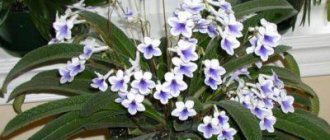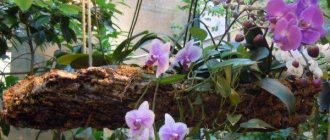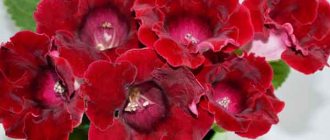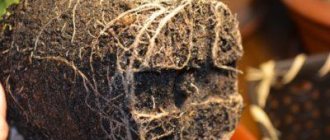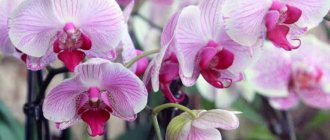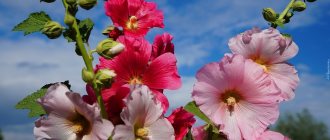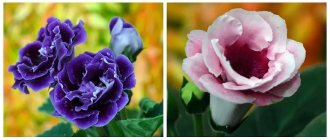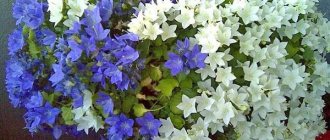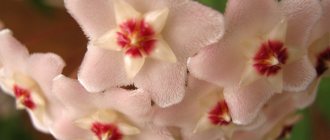- March 8, 2019
- Flowers
- Blackwhisker Rose
Boris Pasternak also wrote about how in winter, from behind the window frame, geranium flowers reach out to white snowflakes. This plant delights with bright colors and delicate aroma at any time of the year. Photos of geranium demonstrate the beauty of this flower, symbolizing comfort and warmth in the house. It is difficult to imagine the window sills and balconies of European houses without geraniums. In southern countries, it decorates parks and squares, delighting with bright colors all year round.
We invite you to get to know what geranium looks like, methods of propagation, and care tips. It has been proven to neutralize any negative energy in the room. This is a kind of amulet that extinguishes quarrels and protects the house from uninvited guests. We offer you the most interesting information about this wonderful flower.
Description of geranium
This plant is also called pelargonium. The word pelargos is translated from Greek as “stork”. The fruits of this flower look like a stork's beak. Geranium on the window will be useful to many. She is even considered a helper in love. It is important to note that this flower feels great not only in a pot, but also in the garden, in a flower bed. Today, about 300 species of pelargonium have been bred.
This plant was first discovered in the 17th century by botanist John Tradescan. As a result of long-term crossing of various types of wild geranium, a domestic variety was obtained. She arrived in Russia overseas as a gift. Once upon a time, the English king George III sent several plants to Catherine II to decorate the Pavlovsk Garden. For a long time, pelargonium was considered an aristocratic plant. Owners of rich mansions bred it in their greenhouses. Today it is used by all flower lovers. They remembered her because she is really gorgeous!
Homemade geranium, photos of which are posted in our article, can be tall and short. Its stems are covered with delicate fluff. The plant is characterized by beautiful rounded leaves with a wavy edge. Leaf color varies from bright green to dark bottle green. Sometimes there is a light border along the edges. Pelargonium leaves are also slightly pubescent. They contain essential oil, which can be released in the sun. This is a kind of protection against overheating.
Photos of geranium show that its flowers are collected in inflorescences that resemble bright hats. There are buds of very different colors: snow-white, soft pink, lilac, purple, burgundy.
Flower growers like homemade geraniums because these bushes, strewn with large umbrella inflorescences, are unpretentious, grow quickly, bloom profusely and multiply quickly. It is important to note that hanging varieties have also been bred, which look beautiful in hanging flower pots on balconies or verandas. A description of geranium without mentioning the ampelous type would be incomplete. We'll talk about it in more detail later.
Beneficial features
The healing and other beneficial properties of geranium became known several centuries ago. It was brought to Europe from South Africa in the 16th century. At the same time, it has long been believed that geranium can not only heal wounds, but also treat stomach diseases and even cure cancer. Now some types of plants are actively used in folk medicine as a disinfectant and anesthetic. In addition, they can help with external use of skin diseases, wounds or ulcers.
Many people know the healing properties of blood-red geranium. For example, it helps as a remedy for headaches and lowers blood pressure, and also has a calming effect. The flowers and leaves of this medicinal plant can be used to make a tincture for conjunctivitis.
Due to the small amount of radium contained in the rhizomes, the plant is also used to treat cancer . If we talk about meadow geranium, then the preparations made from it are an excellent remedy for insomnia and neurological diseases. Forest geranium is also known for its medicinal properties, and its tincture helps with heart ailments.
A distinctive feature of all types of geranium is the essential oil they contain, which is used in cosmetology for skin care and in the preparation of medicines. It is usually a yellowish liquid and has a specific odor. It is also used as a massage product and to relieve tension and fatigue.
In addition, geranium essential oil is used as an antispasmodic and antiseptic. It can also be used internally for diseases of the gastrointestinal tract only after consulting a doctor. Currently, the main producers of geranium essential oil are France and a number of African countries. It is also worth noting Bulgarian oil, which has a pleasant aroma and differs in properties and appearance from ordinary oil.
Attention! Caution must be exercised when consuming geranium oil internally; the dose should be moderate. It is necessary to take into account the high concentration of active components in the oil.
In addition to the listed medicinal properties, geranium can also be used as a repellent for insects, which become especially numerous during the hot season. In addition, this plant is known as an enemy of weeds. Its presence in the garden area prevents their active reproduction, which saves time in caring for flower beds. Also, geranium, like many indoor plants, perfectly purifies the air in the room, which is especially important in cold weather.
Main types
To successfully breed a flower, you need to follow proper care in winter and during the warm season. All activities for growing pelargonium will depend on the type of plant. We will highlight 6 main types of geranium:
- Ampelnaya. It has long, flowing stems that can reach a length of up to 1 m. Hanging pots are used for planting ampelous pelargonium. Colors range from white to deep red. Purple and pale coral inflorescences look especially delicate. The buds resemble the shape of a brush and are located at the tops of the falling branches. The leaves have a smooth surface. In the photo below you can see what ampelous geranium looks like.
- Royal. Of all the varieties it is considered the most capricious. This is a low-growing plant (up to 50 cm in height). All the beauty lies in large double flowers, collected in luxurious inflorescences. Royal pelargonium resembles a bright colored hat. Sometimes spotted flowers are found. The leaves are round in shape, but with jagged edges.
- Zonal. It is considered the most common type. Stems can reach up to 80 cm in height. The leaves are characterized by a round shape and a white, brownish or yellowish edge. The stems grow straight, and at the tops they produce inflorescences in the form of umbrellas of different colors.
- Fragrant. The flowers of this geranium have a pleasant aroma. There are varieties with different notes of smell: lemon, apple, cinnamon, rose, etc. There are about 150 species in total. It is not the flowers that are considered decorative, but the leaves. The flowers are very small and grow one at a time. This variety is very capricious in terms of flowering quality.
- Succulent. A rare flower due to the difficulty of its reproduction. It takes years for its cuttings to take root. The appearance of the plant resembles kohlrabi cabbage. Each stem has one leaf covered with hairs. The flowers appear on a branched peduncle and are greenish-white in color.
- Variegated. It is distinguished by variegated leaves. The leaves may have red or yellow spots, streaks, or lines. Its bushes are low (up to 45 cm). Flowering is inconspicuous in the form of small small flowers.
Similarities between pelargonium and geranium
Geranium (lat. Geranium) and pelargonium (lat. Pelargonium) have many similar external characteristics:
- the shape of the seed pod, which is often compared to the beak of a crane;
- leaf surface covered with small hairs;
- arrangement of leaf plates (can be alternate or opposite);
- erect stems (except for hanging varieties).
Both members of the family have a similar characteristic odor. It is believed that geranium in the house can disinfect the air and destroy viruses and bacteria.
Propagation by seeds
There are three ways to propagate geraniums at home: seeds, cuttings and roots. Each method has its own advantages and disadvantages. You can try growing a pelargonium bush from seeds. They are sold in the store today. A flower grown from a seed may differ from the parent plant. This is how new varieties are developed. Seed propagation is quite long. It should take about a year for a full-fledged bush to form.
To get started, purchase pelargonium seeds. Prepare a loose substrate of turf soil, peat and sand for sowing them. For better pecking of the seeds, rub them with sandpaper. Then place them in a growth enhancer for a few hours. Sow the seeds on top of the substrate and lightly sprinkle with sand. Spray with water at room temperature, cover the container with film and place in a warm place.
After germination, move the containers to a cool, well-lit room. After two days, water the seedlings with a pink solution of potassium permanganate, but make sure that the drops do not fall on the sprouts themselves. 14 days after germination, pick the seedlings. After another month and a half, transplant them into a permanent pot. As soon as the sixth leaf appears, pluck. This is necessary to form a beautiful bush of homemade geranium. If the stems are not pinched, they will become very elongated.
Wintering
In warm regions, gardeners leave geraniums in open ground for the winter. It is important to prepare the crop for the dormant period in order to preserve the decorativeness and health of the flower.
The period of preparation for the wintering period begins in mid-autumn, when at the end of September they gradually stop watering the flowers. By the beginning of frost, all stems and shoots are pruned, leaving about 5 cm of shoots above the ground. The remaining part of the plant is covered with a thick layer of mulch - peat, dry leaves or spruce branches.
Vegetative propagation
Cuttings can be carried out at any time of the year, but it is better to use autumn or spring for this. In spring, shoots awaken and growth is activated. A cutting planted in the spring will delight you with a beautiful inflorescence in the summer. The strongest cuttings are in the fall, after the end of the flowering season. They are strong and quickly accepted. Autumn propagation by this method is considered the best. At the same time, flowers will appear at the beginning of summer. How to propagate by cuttings:
- Cut healthy cuttings 7-10 cm long. Do this with a knife or pruning shears. Make sure that the cut is located between the leaf nodes.
- Remove excess leaves from the bottom of the cutting, leaving them only at the top. This will prevent moisture evaporation and allow roots to form faster. Keep the cuttings in the growth stimulator for 3-5 minutes.
- Make a hole in a container with the substrate, lower the cutting there, cover it with soil and water it.
In addition to this simple method of cuttings, rooting in a bag or special greenhouses is also used. Before planting a cutting, some gardeners place it in a glass of water and wait for roots to appear. This method is also quite effective, because geranium takes root quickly.
Sometimes pelargonium produces new shoots from its roots. They are used to produce new bushes. To do this, the plant is taken out of the pot and divided so that each sprout has its own root system. Then the bushes are planted in separate pots.
Planting in open ground
Growing geraniums in garden conditions is much less common than in indoor ones, since most gardeners prefer to grow the flower at home. However, garden varieties are also capable of decorating a garden, along with other flowering bushes.
Is it possible to grow geraniums outside?
Geranium easily tolerates temperature changes, copes with wind and other negative factors, so it can be grown both indoors and in garden conditions. All varieties of geranium are suitable for cultivation in open ground, if you choose the right place and soil for planting. Few gardeners know that geranium flowers not only perform a decorative function, but also prevent the growth and development of weeds in the flower bed. This is due to the fact that the rhizome of garden bushes is distributed under the top layer of soil in a dense network, preventing the weeds from receiving enough light and nutrients.
How to prepare soil and flowers for planting
Often, it is not an adult plant that is planted in open ground, but its cuttings. However, if you simply stick a twig into the soil, there is a chance that the branch will rot and not grow. To prepare the cuttings for planting, the cutting sites are treated with activated carbon and then placed in a growth stimulator for several hours. If a grown plant is placed in the soil, it does not need preparation.
The soil for geraniums begins to be prepared in the fall, when mineral fertilizer complexes are added to the substrate. During digging, humus is added to the substrate. Since geranium reacts positively to an acidic substrate, before planting, watering is carried out with the addition of citric or oxalic acid.
The planting hole should be approximately 2 thirds larger than the size of the rhizome. At the bottom of the planting hole, make a high-quality layer of drainage - pebbles, expanded clay, polystyrene foam or other small pebbles. When planting geraniums, gardeners recommend laying different layers of soil in turn - peat, sand and turf soil.
Where to plant geraniums
The culture prefers open sunny areas, without drafts and strong winds. In hot weather, it is optimal to shade the crop. Experienced gardeners recommend transplanting geraniums into open ground early in the morning, after rain or late in the evening.
When to replant
Transplantation into open ground is carried out after the end of frost. The optimal time for cultivating adult varieties of geranium is considered to be the beginning of May, while cuttings are placed in the ground only at the end of spring.
How to plant
Planting or replanting geraniums in open ground has several nuances that are taken into account, depending on the type of planting:
- If an adult plant is placed in the ground, it is optimal to immediately cut off all shoots to a height of about 10 cm immediately after planting. This prevents stretching of the stems and loss of decorativeness of the crop. The cut areas are treated with natural charcoal or an antiseptic.
- When placing geranium seedlings in the ground, the procedure is carried out in the morning, in the last days of spring. Plants are planted in pre-prepared planting holes. About 20 cm is left between the seedlings. After planting, the plants are watered abundantly. It is recommended to shade the crops for half a month to prevent burns.
Inexperienced gardeners do not know how to properly plant geraniums in open ground as seedlings. To preserve the health of the seedlings as much as possible, the procedure is carried out as follows:
- The soil is carefully dug up to the depth of a spade bayonet. When digging, compost is added to the ground;
- the depth of the planting hole is about 30 cm;
- a layer of drainage is placed at the bottom of the hole, then sprinkled with a layer of nutrient substrate;
- the seedlings are carefully removed from the pot with their soil;
- the plants are placed in the center of the hole, then buried in a layer of soil and compacted;
- water the crop with water.
Between mature bushes, gaps of about half a meter are left. Such simple rules help to carefully and painlessly place geraniums outside.
Trimming
Many gardeners are interested in pruning geraniums in autumn and spring. This is necessary for lush flowering and bush formation. If pelargonium is not pruned at least once a year, there will be few inflorescences, the shoots will become bare and elongated, and the flower will take on an unattractive shape. The flowering of geraniums is very dependent on this procedure. You need to constantly pay attention to the growth and length of the stems. This is done for the following purposes:
- The appearance of new shoots, the formation of new primordia of inflorescences.
- Creating a compact, even plant shape.
- Lush, long-lasting and stable flowering.
- Obtaining high-quality planting material.
First, let's talk about autumn pruning and preparing geraniums for winter. It is carried out after the formation of new peduncles is complete. This procedure will significantly improve the health of the plant. First, remove all dried flowers, leaves, and damaged stems. The bush is inspected, elongated shoots that spoil the appearance of the plant are shortened. Pruning is carried out in the internodes, where over time shoots form from dormant buds. Autumn pruning requires shortening the stems by a third. There is no need to be afraid of deep pruning of pelargonium. Over time, it will make up for everything and form new sprouts in the nodes. It is recommended not only to trim bush geraniums, but also to pinch them after every fourth bud. This procedure can be carried out until December. Care for geraniums in winter is kept to a minimum.
In spring, less drastic pruning of plants is carried out. It is performed in February or early March. Delay is fraught with late formation of flower buds. How is this done? Only long and weakened stems are eliminated. They are cut so that two or three buds remain at the bottom.
Transplantation process
Pelargonium easily tolerates transplantation in winter and summer. But spring is best suited for this, when the plant awakens from winter dormancy. Geranium does not like much space in the pot, because most of its energy goes into flowering. It is better to select compact containers for transplantation. Large pots do not contribute to abundant flowering, because all the energy will be spent on developing the root system. There are several criteria by which you can find out whether the bush is worth replanting:
- Plant growth slows down.
- You often have to water the bush because the soil dries out.
- Roots begin to emerge from the hole in the bottom of the pot.
- The roots entwine the entire lump of earth with geranium.
If you decide to transplant a plant into a pot that has already been used, then first disinfect it. Wash it with a solution of potassium permanganate. Then place drainage in the form of small pebbles into the prepared container. Remove the bush with a lump of earth from the old pot and place it in a new one. Fill the space between the bush and the walls with moist substrate. Lightly compact the soil.
Care
Geranium is one of the most popular indoor plants and does not require special care. However, this plant has a number of features that a novice gardener should know about. For example, in winter it is better to keep geraniums in a cool place. At the same time geranium is a light-loving plant , so it is better to place the pot with it on the sunny side.
Dried flowers of the plant must be removed. It should be noted that all types of geraniums require regular pruning, which should be done in the fall. In this case, you can leave the stems with 5-6 leaves, and cut off those that grow from under the leaves, and not from the root. Cut stems are used for propagation as cuttings.
It is important to remember that indoor geraniums do not require abundant watering, especially in winter.
Reference! For better growth, a pot of geraniums must be equipped with a good drainage system. At the same time, geranium loves dry heat, so it can be taken out to the balcony.
For favorable growth, you can fertilize geraniums with liquid fertilizers. For example, an excellent fertilizer would be an iodine solution, which is prepared in the following ratio: 1 drop of iodine per 1 liter of water. Geraniums should not be replanted unless absolutely necessary. It is advisable to do this only with intensive growth and elongation of roots that do not fit in the pot.
How to water geraniums
Pelargonium loves soft, clean water at room temperature. It is important to note that it does not need spraying. Do not use water directly from the tap; wait until it settles first. You can also pass it through a filter.
How to water geranium so that it blooms often and beautifully? The regime is important here. You can’t water it often, as the roots may rot. It is enough to do this twice a week. Water from a container with a narrow neck so that the water seeps out near the walls of the pot and does not fall on the leaves.
Geranium or cranebird - what kind of plant is it?
Geranium (Crane beetle) is a genus that belongs to the Geraniaceae family. This family includes both herbs and shrubs - about 400 species. The name of the genus comes from the Greek words “geranion, geranios”, meaning “crane”. Translated from German it is called “stork’s beak”, since the fruits of geraniums resemble the beak of a crane.
Types of geraniums
Botanical description of geranium:
- leaves are located on cuttings;
- leaves may be palmately divided or palmately lobed, sometimes pinnate;
- most often the leaves are covered with soft fibers;
- the colors of the flowers are very diverse;
- fruit - capsule.
The Geraniaceae family includes another species - Pelargonium. They are often grown at home as potted crops. Varietal pelargoniums are highly valued by indoor plant lovers.
Wild crane bird
Crane beetle differs from pelargonium in that it grows in garden conditions, while beautiful pelargoniums are grown by home gardeners. These two flowers are confused quite often.
Interesting! On the territory of Russia, only 40 species of these plants grow under natural conditions.
Top dressing
When fertilizing geraniums, consider the season. In spring and summer, fertilizer is required once every two weeks, and in winter there is no need to feed the plant. For lush flowering, a complex mineral fertilizer with potassium, phosphorus and nitrogen is used. Fertilize an hour after the main watering. Sometimes, even in winter, you can get flowers on geraniums if you water them with sweet water. You can do this once a week. How to feed indoor geranium so that it blooms all summer? Iodine solution has an excellent effect on flowering. Just a drop per liter of water is enough. Make sure that the iodine solution does not get on the leaves. Photos of geraniums in the video below demonstrate abundant flowering after timely feeding.
Reviews of geranium varieties
Hybrid species of pelargonium and geranium are especially highly valued due to their unusual colors and high level of adaptation to various natural conditions. To date, a huge number of hybrids have been created; it is impossible to describe them all. Among them, the most popular are Blue Blood and Faye Anna.
Blue Blood
Blue Blood is a very frost-resistant variety. This is its main advantage over other varieties. Botanical description of the flower:
- maximum stem height – 50 cm;
- Crane flowers are large, rich purple in color with pronounced veins;
- The leaves are small, covered with villi.
Flowering lasts from June to August.
Variety Blue Blood
Faye Anna and others
Faye Anna is also a frost-resistant hybrid. This is a low-growing variety with a maximum height of up to 20 cm. The flowers are pink, the middle ones are white, so it can safely be called two-color. Blooms from July to August.
Interesting! During the flowering period, they change their color from green to red, only the edging along the outer edge of the leaf remains unchanged.
Fragrant varieties of garden pelargonium are distinguished by a pleasant smell of leaves, which most often appears upon direct contact with the plant. But some emit a scent on their own. Hence, there is often an opinion that some types of this plant cause headaches.
The most popular fragrant varieties:
- The most fragrant;
- Curly;
- Capitate;
- Felt;
- Needle-shaped.
The leaves of these varieties can smell like pineapple, lemon, pine needles, lemon balm, nutmeg, and almonds.
Crane beetle is a wonderful, unpretentious plant for planting in the garden and in the house. Whatever variety the gardener chooses, he will in any case be satisfied with the result. It is also important that since these flowers are widespread in nature, even beginners can cope with their agricultural technology.
- Sveta. Geranium is a beautiful plant, I didn’t know there were so many varieties. Geranium has a specific smell, I wonder if there are varieties with a more pleasant aroma?
- Nina. A very old, but 1000 times proven method, when someone was sick in the house, my mother always picked a geranium leaf, rubbed it in her fingers and gave it to all family members to smell, the result was not long in coming.
- Elena. I love red zonal geranium))) My favorite))).
- Madam Internet. I really love geraniums. I take it out in the summer and plant it at the dacha. I love ivy-leaved pelargonium. It's a pity that it doesn't bloom as beautifully here as in England. And for some reason my daughter considers geranium to be a flower of poverty. Apparently, she has an association with the USSR?
- Nikita. I have a lot of geranium plants of different types at home: pink, red, white. I like geranium flowers, they are very beautiful. Geranium loves light, but on hot days it is better to hide it from direct sunlight, as the leaves can get burned. I can easily tolerate the smell of geranium.
Diseases and treatments
Unfortunately, sometimes pelargonium succumbs to certain diseases. Here are the diseases of indoor geranium and their treatment:
- The leaves turn yellow and dry out.
- Stops blooming.
- Covered with Botrytis fungus.
- The roots are rotting.
- The leaves become covered with a rusty coating.
- Bacterial and viral infections occur.
- Spotting appears.
Yellowing of leaves depends on a lack or excess of moisture and light. Geraniums bloom poorly due to insufficient pruning. Lighting also affects the formation of buds. To make it enough, you can use a special lamp. Drying of the leaves is treated by watering with a 5% solution of Bordeaux mixture or Fitosporin. If a geranium is infected by a fungus, it becomes covered with gray spots and fluff. All this is due to excess moisture. The affected flower fragments must be completely removed, and the rest treated with fungicides.
Chemical composition
Geranium is actively used in traditional and alternative medicine because it has a healing chemical composition. Thus, the leaves and stems of a flower contain elements such as:
- tannins;
- essential oils and acids;
- flavonoids;
- carotene and pectin;
- vitamin C;
- alkaloids;
- glucose and fructose;
- vitamins of group B, PP.
This chemical composition makes it possible to use geranium for the treatment of many diseases, including nervous ones. The plant has a number of useful properties that allow it to fight various pathologies.
Garden geranium
In addition to indoor geraniums, there are also garden geraniums. True, it has not become widespread in Russia. When choosing this type of geranium, you need to focus on the climatic conditions of your area and plant adapted varieties. This species was bred from wild varieties. Garden geranium is characterized by openwork leaves and delicate solitary flowers. This is a perennial crop that reproduces by self-sowing. Particular attention should be paid to preparing perennial garden geraniums for winter. Note that the plant tolerates cold well. The main thing is to cut off the ground part in the fall and cover the soil around the bushes with mulch.
Difference between pelargonium and geranium
Geranium and pelargonium have many differences that allow them to be classified as different genera of the same family.
The first of them is the historical homeland of plants. In nature, geranium grows in the northern hemisphere, pelargonium - on the African continent. This is what accounts for their difference in heat resistance.
The second difference is the structure of the flowers, which is what allows plants to be distinguished. The main features are given in the table.
| Sign | Geranium | Pelargonium |
| Number of petals | More often 5, less often 8 | Almost always 5 |
| Shape of flowers | Always correct | Asymmetrical (the upper petals are larger than the lower ones, barely noticeably separated from them) |
| Number of fertile stamens in a flower | A few dozens | 5-7 pieces |
| Variety of petal shades | Most often blue-violet. Are never scarlet | Common colors are white, red, pink. There are no shades of blue |
There is also a difference in the formation of inflorescences. Geraniums are characterized by single buds. For pelargonium - umbrella inflorescences.
